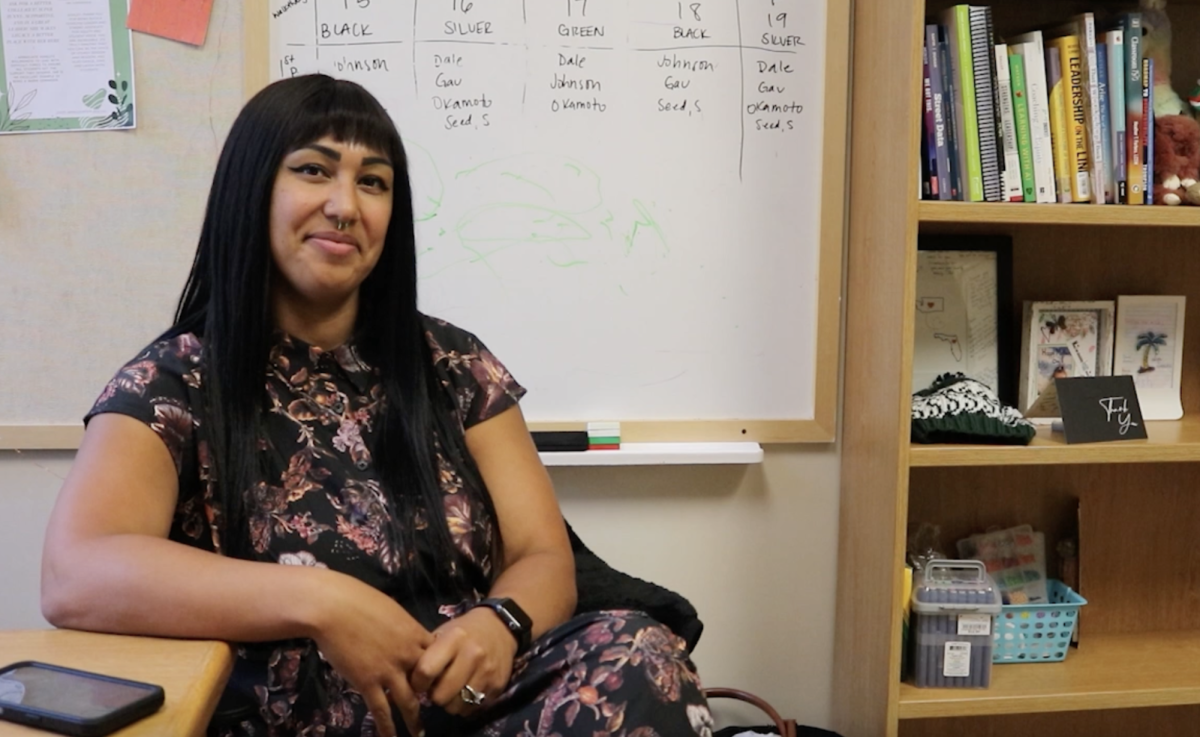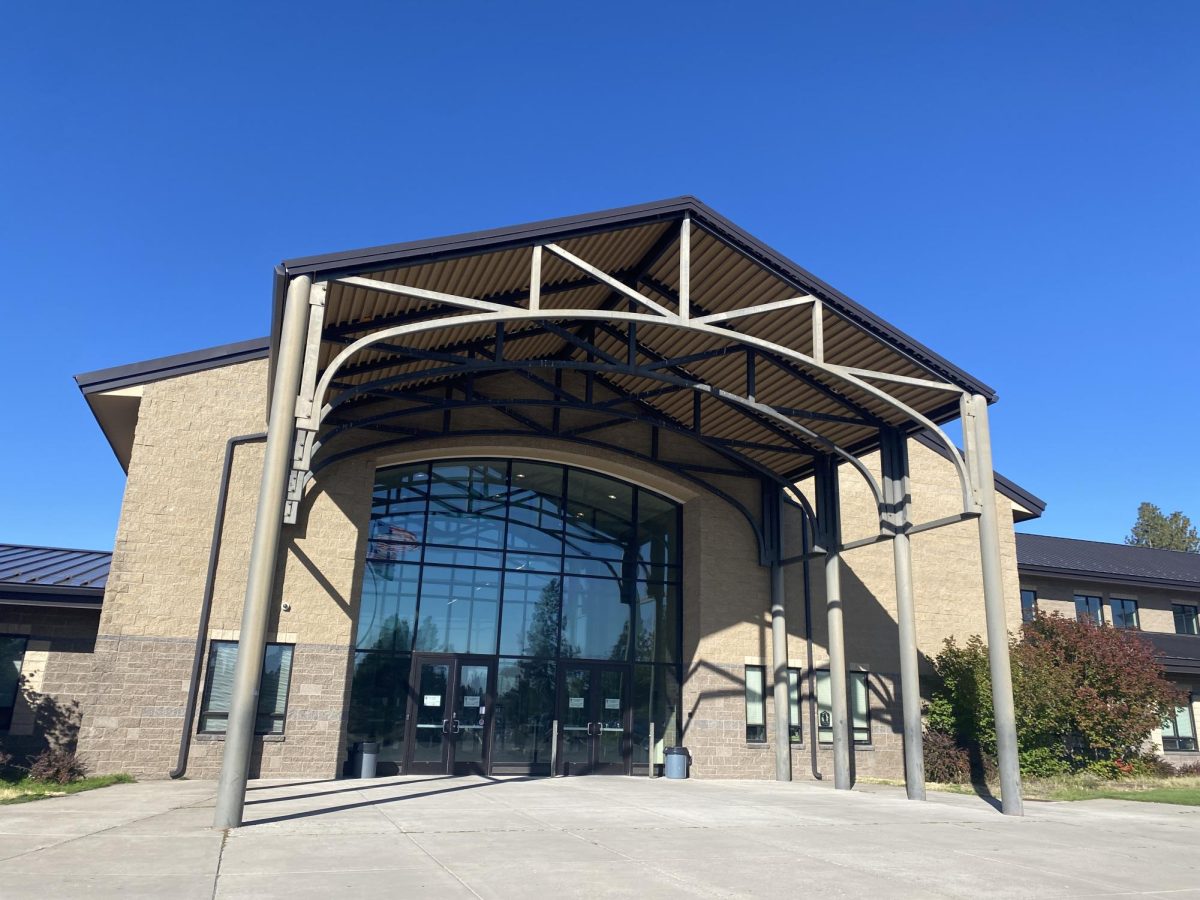In A Different Light
America Through the Eyes of an Exchange Student
What does it mean to be American? This is a question as old as our country itself and much more baffling than we’d like to believe. But in the end, it was an exchange student who showed me the answer.
Maria Gil, my host sister and a senior from Valencia, Spain, came to the US through Rotrary’s youth exchange program. She describes how she had watched many American movies and “wanted to experience the whole thing.” The stereotypical America is big houses, sports games and fast food chains. In many ways, this generalization isn’t false.
One of Gil’s favorite lines is: “this is so American.” The first time she said this was at a football match in Summit’s student section. Kids, dressed in swimsuits and Hawaiian shirts, were screaming while cheerleaders brandished their pom-poms and players streaked down the field. She continued to reiterate this on road trips and at high school dances.
Growing up in San Francisco, I didn’t have any of these experiences. In fact, I shied away from the “American” label as I associated it with obesity, consumerism and idiotic politics. On international trips, I hesitated to say where I was from, and I constantly joked with my parents that we needed to move to Canada. Hosting Gil soon after moving to Bend forced me to experience—and as a result—appreciate aspects of my new community. Football games are a way to build a sense of community and are an opportunity to bond. And “the country” or rural areas have their benefits, including access to nature. As well, there are many ways in which American culture is very welcoming and open-minded.
After her first day at school, my exchange sister’s first comment was how students can wear anything to school—whether it’s pj’s, jean shorts or crop tops. “Each person dress[es] with the clothes that they like, not what people will think,” she explained. Just one example of more lenient social standards and norms compared to Spain.
On a similar note, Gil said she felt that more people are comfortable coming out as LGBTQIA+, and that there’s a strong Queer community in the states. Overall, “there’s a really big open mind.” In actuality, this contradicts a statistic from the Pew Research Center (a greater number of people in Spain were accepting of homosexuality), but the discrepancy could arise from different views in different states, or different views surrounding different identities within the LGBTQIA+ umbrella. For example, Gil had never heard of choosing different pronouns before she arrived in Bend. It was simply something that didn’t exist at home. No matter what, the same Pew survey shows that the United States is one of the countries most accepting of homosexuality, despite all of the progress that still needs to be made.
At school, Gil also pointed out the differences in terms of student-teacher relationships. While it shocked her at first, she noted how the staff were more accessible, more “human.” In addition to understanding commitments outside of school and being open to questions, staff members shared stories about themselves.
At the same time that I was hosting Gil, I was talking to another exchange student at Summit: Ida Christiansen. While Christiansen had considerate and accessible teachers in her small town of Værløse, Denmark, she agrees with Gil that schools in the US have more school spirit. Sports and clubs connected to the school create more opportunities for students to bond and develop pride. “In general, American high schools have the best school spirit!!!” the sophomore wrote to me over text.
All together, the community at school has been a gratifying experience for Christiansen and made learning more enjoyable for Gil… but also more unsafe.
During one of her first days at Summit, a voice came on over the intercom in Gil’s classroom. Students hurried out of sight, and the teacher talked about intruders with guns. Police officers even came around to check each door. For Gil, this was not normal. Days before, she had heard about a shooting at Safeway but didn’t understand. All she knew was that she was scared.
Here, “the school is not 100% safe,” said Gill.
Counselor Carla Gomez also acknowledges that, “our community sometimes has violence in it,” and expresses how this surprises many foreign students. In many countries, this just isn’t a problem. To Gil, the solution seems simple. In Spain, “you just don’t need to have [guns].”
However, in the US, the issue is intertwined with politics and history. The Second Amendment (which gives all American rights for gun ownership) was a result of British control over the original colonies, a type of rule that they wanted to protect themselves from in the future. “A well regulated Militia, being necessary to the security of a free State, the right of the people to keep and bear Arms, shall not be infringed.” In other words, the founding fathers created this amendment as a way to keep the future government in check and prevent an unjust and controlling leadership like the British one they had freed themselves from.
Still, our past isn’t an excuse for the damage it’s caused. In addition to claiming that it’s their right, many Americans argue that guns are necessary for self-defense. But when a large portion of our country owns assault rifles, it isn’t surprising that these weapons are used for more than protection.
Exchange students and travel are key to stepping back and viewing a place in a different light. In this way, we can come to understand that America is a place like any other – a place of both good and bad. Yes, we have our problems, but this doesn’t mean that we can ignore everything else that’s good. Or do the opposite and ignore the issues. The ideal America is a place where we embrace our best parts, acknowledge our worst, and then work to make change for a better future.

Usually found outside, the wild Dailey can be spotted frolicking in the woods or on top of a mountain. She enjoys visiting unknown places whether that’s traveling to Myanmar or backpacking into the middle-of-nowhere...




































